#mobile app backend development guide
Explore tagged Tumblr posts
Text
#mobile app backend development#mobile app backend development guide#backend development for mobile app#top backend development company#best mobile app development company#build a backend for a mobile application
0 notes
Text
What Makes DigiCovai the Best eCommerce Development Company in Coimbatore?

Creating a website is not simply a choice in today's digitally-first economy; it is a need for businesses. One thing is certain, regardless of whether you are a manufacturer in Kurichi, a wholesaler in Peelamedu, or a tiny retailer in Town Hall: your consumers are online, and your store should be as well. But picking the perfect companion to guide you there? This is where DigiCovai is useful.
Here are some of the reasons why companies from a variety of sectors regard DigiCovai as the top E - Commerce Development Company in Coimbatore and why they depend on our team to take their brand online.
Built for Sales, Not Just Looks
At DigiCovai, we think your website should do more than just be "live." For this reason, we do more than just design attractive storefronts. We create unique eCommerce websites with backend systems that grow with your company, are optimized for mobile browsing, and are built to convert. Every click, from cart abandonment recovery to product filtering, is designed to have an impact.
24/7 Sales with Web + Mobile
Given that 70% of consumers explore or make purchases on their phones, your online business has to be as responsive as it is on desktops. Our eCommerce solutions are completely mobile-friendly, and for organizations hoping to cultivate enduring client loyalty, iOS and Android app development is a possibility. Since you can own a place in your customers' wallets, why stop at a website?
Methodology-First Method
We listen before we code anything. Every project starts with a strategy meeting to learn about your product, target market, and corporate objectives. After that, we create a user experience that is specific to your target market, regardless of how many goods you sell five or five thousand.
Customized Solutions for All Sectors
Every company is different, and your online store should be no exception. DigiCovai is a Coimbatore-based full-service eCommerce development business that provides tailored solutions for retail stores and boutiques.
Manufacturers Selling Straight to Customers
Delivery of Essentials & Grocery
Skin Care & Cosmetics Brands
Accessories & Electronics
Marketplaces with many vendors
eCommerce Partner All-in-One
DigiCovai is your digital growth team, not just a development company. Everything you need to create, expand, and develop your online store without worry is provided by us, from UI/UX design and secure payment gateway integration to real-time analytics dashboards and post-launch maintenance.
Findings That Make an Order
Mobile apps have improved retention, streamlined backend operations with bespoke admin panels, and increased traffic by up to three times for our clients. What's the best part? They only needed to be prepared to expand; they didn't need to be tech-savvy.
Final Thought
Many developers are available to "build you a website." However, DigiCovai is your partner if you're searching for an E - Commerce Development Company in Coimbatore that creates for outcomes, dependability, and long-term growth.
Together, let's create your 24/7 store.
youtube
2 notes
·
View notes
Text
Vietnam software outsourcing: What every tech leader needs to know in 2025
In the dynamic landscape of global business, outsourcing has emerged as a powerful solution, and Vietnam stands out as a rising star in this arena. This comprehensive guide about Vietnam software outsourcing from PowerGate Software is designed for a diverse audience, including SMBs, rapidly scaling startups, and established enterprises across various industries. Whether you’re considering your first outsourcing venture or looking to diversify your current offshore portfolio, this guide will equip you with the essential knowledge to make informed decisions.
You’ll learn about the core benefits of IT outsourcing to Vietnam, how it compares to other leading destinations, popular services to consider, critical cost factors, and a step-by-step roadmap for successful engagement.
1. Core benefits of software outsourcing to Vietnam
Vietnam’s growing appeal as an outsourcing hub stems from several key advantages:
1.1. Significant cost savings
One of the most immediate and impactful benefits of IT outsourcing to Vietnam is the significant cost reduction. You’ll benefit from substantially lower labor costs compared to Western countries. For instance, while the average software developer salary in the US can exceed $123,000 annually, in Vietnam, the average annual salary for a software developer is around $80,000.

Source: Onextdigital
1.2. Skilled and growing tech talent pool
Vietnam boasts a burgeoning pool of tech talent, driven by demographics and a strong educational focus. Access a young (*), educated, and tech-savvy workforce known for high literacy rates and a strong work ethic. There’s an increasing focus on STEM education and specialized skills in AI, Blockchain, and Cybersecurity, ensuring a future-ready talent pool. English proficiency is also on the rise within the tech sector.
(*) In 2025, the working-age population (15-64 years) in Vietnam accounts for 69.3% of the total population
1.3. Scalability & flexibility
IT outsourcing to Vietnam offers unparalleled scalability and flexibility, which are crucial for dynamic business needs.
Rapid team expansion or reduction: Companies can quickly scale their teams up or down based on project demands, without the complexities and costs associated with in-house hiring and layoffs.
Reduced administrative burden of in-house hiring: Vietnamese Outsourcing partners handle all aspects of recruitment, onboarding, payroll, and HR, freeing up your internal resources to focus on core business activities.
1.4. Innovation & quality
Vietnamese software outsourcing providers are increasingly recognized for cost-effectiveness and their commitment to innovation and quality.
Growing expertise in emerging technologies: As mentioned, the talent pool rapidly develops expertise in cutting-edge technologies, enabling businesses to leverage these advancements for their projects.
Commitment to quality and international standards: Many Vietnamese companies adhere to international standards (e.g., ISO, CMMI) and employ robust project management methodologies (e.g., Agile, Scrum) to ensure high-quality deliverables.
2. Popular IT services outsourced to Vietnam
Vietnam’s software outsourcing capabilities span a wide range of services, catering to diverse business needs.
Software Development: This includes a broad spectrum of services, from web development (frontend and backend) and mobile app development (iOS, Android, cross-platform) to complex enterprise applications.
Web Design & Development: Creating visually appealing and highly functional websites.
Quality Assurance (QA) & Testing: Ensuring software quality through manual and automated testing, performance testing, security testing, etc.
IT Infrastructure & Support: Services like DevOps implementation, Cloud Services (migration, management), and general IT support.
Emerging Technologies: Growing expertise in areas like AI/ML (Artificial Intelligence/Machine Learning) for intelligent automation and data analysis, Blockchain for secure and transparent transactions, IoT (Internet of Things) for connected devices, and Data Science for insights and predictive analytics.
Cybersecurity Services: Protecting digital assets and infrastructure from threats.
1 note
·
View note
Text
Certainly! Let’s explore how to build a full-stack application using Node.js. In this comprehensive guide, we’ll cover the essential components and steps involved in creating a full-stack web application.
Building a Full-Stack Application with Node.js, Express, and MongoDB
1. Node.js: The Backbone of Our Application
Node.js is a runtime environment that allows us to run JavaScript on the server-side.
It’s built on Chrome’s V8 JavaScript engine and uses an event-driven, non-blocking I/O model, making it lightweight and efficient.
Node.js serves as the backbone of our application, providing the environment in which our server-side code will run.
2. Express.js: Simplifying Server-Side Development
Express.js is a minimal and flexible Node.js web application framework.
It provides a robust set of features for building web and mobile applications.
With Express.js, we can:
Set up middlewares to respond to HTTP requests.
Define routing rules.
Add additional features like template engines.
3. MongoDB: Storing Our Data
MongoDB is a document-oriented database program.
It uses JSON-like documents with optional schemas and is known for its flexibility and scalability.
We’ll use MongoDB to store our application’s data in an accessible and writable format.
Building Our Full-Stack Application: A Step-by-Step Guide
Setting Up the Environment:
Install Node.js:sudo apt install nodejs
Initialize a new Node.js project:mkdir myapp && cd myapp npm init -y
Install Express.js:npm install express
Creating the Server:
Create a basic Express server:const express = require('express'); const app = express(); const port = 3000; app.get('/', (req, res) => { res.send('Hello World!'); }); app.listen(port, () => { console.log(`Server running at http://localhost:${port}`); });
Defining Routes:
Define routes for different parts of our application:app.get('/user', (req, res) => { res.send('User Page'); });
Connecting to MongoDB:
Use Mongoose (a MongoDB object modeling tool) to connect to MongoDB and handle data storage.
Remember, this is just the beginning! Full-stack development involves frontend (client-side) work as well. You can use React, Angular, or other frontend libraries to build the user interface and connect it to your backend (Node.js and Express).
Feel free to explore more about each component and dive deeper into building your full-stack application! 😊 12
2 notes
·
View notes
Text
In the digitIn the realm of web development, choosing the right backend framework is crucial. But with so many options available, which ones are the most popular? This guide will unravel the top backend frameworks, including Django, Ruby on Rails, and Express.js. Dive into their features, scalability, and community support to make an informed decision for your next web development project.al age, language learning apps are in high demand. But what makes a language learning app stand out? Features like personalized learning paths, interactive exercises, and real-time feedback are key. Additionally, incorporating gamification elements, social learning, and integration with native speakers can enhance engagement. This guide will explore innovative ideas to create a language learning app that not only educates but also captivates users, ensuring a profitable business venture.
2 notes
·
View notes
Text
Elevating Your Full-Stack Developer Expertise: Exploring Emerging Skills and Technologies
Introduction: In the dynamic landscape of web development, staying at the forefront requires continuous learning and adaptation. Full-stack developers play a pivotal role in crafting modern web applications, balancing frontend finesse with backend robustness. This guide delves into the evolving skills and technologies that can propel full-stack developers to new heights of expertise and innovation.

Pioneering Progress: Key Skills for Full-Stack Developers
1. Innovating with Microservices Architecture:
Microservices have redefined application development, offering scalability and flexibility in the face of complexity. Mastery of frameworks like Kubernetes and Docker empowers developers to architect, deploy, and manage microservices efficiently. By breaking down monolithic applications into modular components, developers can iterate rapidly and respond to changing requirements with agility.
2. Embracing Serverless Computing:
The advent of serverless architecture has revolutionized infrastructure management, freeing developers from the burdens of server maintenance. Platforms such as AWS Lambda and Azure Functions enable developers to focus solely on code development, driving efficiency and cost-effectiveness. Embrace serverless computing to build scalable, event-driven applications that adapt seamlessly to fluctuating workloads.
3. Crafting Progressive Web Experiences (PWEs):
Progressive Web Apps (PWAs) herald a new era of web development, delivering native app-like experiences within the browser. Harness the power of technologies like Service Workers and Web App Manifests to create PWAs that are fast, reliable, and engaging. With features like offline functionality and push notifications, PWAs blur the lines between web and mobile, captivating users and enhancing engagement.
4. Harnessing GraphQL for Flexible Data Management:
GraphQL has emerged as a versatile alternative to RESTful APIs, offering a unified interface for data fetching and manipulation. Dive into GraphQL's intuitive query language and schema-driven approach to simplify data interactions and optimize performance. With GraphQL, developers can fetch precisely the data they need, minimizing overhead and maximizing efficiency.
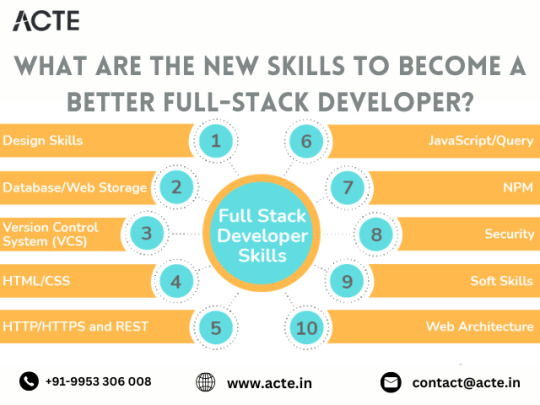
5. Unlocking Potential with Jamstack Development:
Jamstack architecture empowers developers to build fast, secure, and scalable web applications using modern tools and practices. Explore frameworks like Gatsby and Next.js to leverage pre-rendering, serverless functions, and CDN caching. By decoupling frontend presentation from backend logic, Jamstack enables developers to deliver blazing-fast experiences that delight users and drive engagement.
6. Integrating Headless CMS for Content Flexibility:
Headless CMS platforms offer developers unprecedented control over content management, enabling seamless integration with frontend frameworks. Explore platforms like Contentful and Strapi to decouple content creation from presentation, facilitating dynamic and personalized experiences across channels. With headless CMS, developers can iterate quickly and deliver content-driven applications with ease.
7. Optimizing Single Page Applications (SPAs) for Performance:
Single Page Applications (SPAs) provide immersive user experiences but require careful optimization to ensure performance and responsiveness. Implement techniques like lazy loading and server-side rendering to minimize load times and enhance interactivity. By optimizing resource delivery and prioritizing critical content, developers can create SPAs that deliver a seamless and engaging user experience.
8. Infusing Intelligence with Machine Learning and AI:
Machine learning and artificial intelligence open new frontiers for full-stack developers, enabling intelligent features and personalized experiences. Dive into frameworks like TensorFlow.js and PyTorch.js to build recommendation systems, predictive analytics, and natural language processing capabilities. By harnessing the power of machine learning, developers can create smarter, more adaptive applications that anticipate user needs and preferences.
9. Safeguarding Applications with Cybersecurity Best Practices:
As cyber threats continue to evolve, cybersecurity remains a critical concern for developers and organizations alike. Stay informed about common vulnerabilities and adhere to best practices for securing applications and user data. By implementing robust security measures and proactive monitoring, developers can protect against potential threats and safeguard the integrity of their applications.
10. Streamlining Development with CI/CD Pipelines:
Continuous Integration and Deployment (CI/CD) pipelines are essential for accelerating development workflows and ensuring code quality and reliability. Explore tools like Jenkins, CircleCI, and GitLab CI/CD to automate testing, integration, and deployment processes. By embracing CI/CD best practices, developers can deliver updates and features with confidence, driving innovation and agility in their development cycles.
#full stack developer#education#information#full stack web development#front end development#web development#frameworks#technology#backend#full stack developer course
2 notes
·
View notes
Text
A Comprehensive Guide for Job Portal App Development Company In India
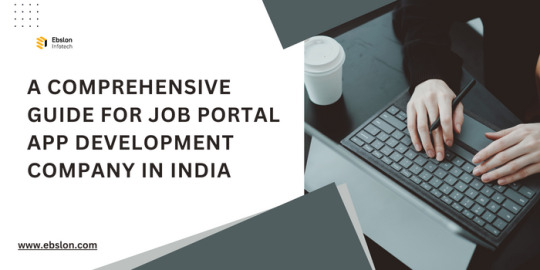
Introduction to Job Portal App Development
Job portal apps have become integral in connecting job seekers with potential employers. Their significance has grown exponentially due to the ease and convenience they offer in job searches. With the proliferation of mobile technology, job portal app development has witnessed a surge in demand.
Understanding the Essentials of Job Portal App Development
Developing a successful job portal app necessitates incorporating crucial features and functionalities. The user interface and experience play a pivotal role in engaging both job seekers and recruiters. A seamless and intuitive design enhances the overall user satisfaction.
Technological Aspects in Job Portal App Development
Behind the scenes, job portal development rely on robust backend technologies and frontend frameworks. Choose Ebslon Infotech technology stack is crucial for scalability, performance, and future enhancements.
Security Measures in Job Portal App Development
Ensuring data protection and user privacy is paramount in job search portal app development. Implementing stringent security measures safeguards sensitive information and builds trust among users.
Monetization Strategies for Job Portal Apps
Monetizing a job portal app can be achieved through subscription models or generating revenue from advertisements. Balancing profitability with user experience is key.
Challenges and Solutions in Job Portal App Development
Competitor analysis and overcoming technical challenges are essential aspects. Analyzing competitors helps in understanding market gaps, while addressing technical hurdles ensures a smooth user experience.
Optimizing Job Portal Apps for SEO
Employing effective SEO strategies like keyword optimization and ensuring mobile responsiveness enhances the app’s visibility and accessibility.
Testing and Quality Assurance in Job Portal App Development
Rigorous testing and QA methodologies guarantee a bug-free and reliable job portal development India, ultimately boosting user confidence.
Launching and Marketing Your Job Portal App
Strategizing pre-launch activities and employing post-launch marketing techniques are vital for app visibility and user acquisition.
User Feedback and Continuous Improvement
Constantly gathering user feedback and implementing improvements based on their suggestions ensures a dynamic and user-centric app.
Scaling and Future Trends in Job Portal App Development
Considerations for scalability and insights into emerging trends prepare job portal development for future growth and advancements in technology.
Conclusion
Developing a job portal app involves a comprehensive approach, combining technological prowess with user-centric design and robust marketing strategies. As the job market evolves, continuous improvements and adaptability are key to staying competitive.
#web design company delhi#website designing company in delhi ncr#website designing services in delhi#marketing
4 notes
·
View notes
Text
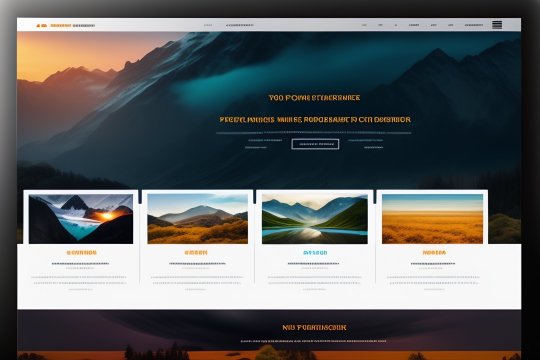
Web App vs. Website vs. Mobile App: Understanding the Differences
In today's digital age, the choice between a web app, website, or mobile app can significantly impact the success of your online presence. Understanding the differences between these options is essential for making informed decisions about your project. In this article, we'll break down the distinctions and explore how ManiWebDev can help you navigate this digital landscape.
Website 🌐
Websites are the digital storefronts of the internet. They primarily serve informational and static content, making them ideal for sharing knowledge, establishing an online presence, or showcasing your business. Key characteristics include:
📚 Primarily informational and static.
🌍 Accessed via web browsers on various devices.
💻 Built with web technologies like HTML, CSS, and JavaScript.
🚀 Examples: Blogs, news sites, company homepages.
Web App 🚀
Web applications, or web apps, are dynamic and interactive platforms accessed through web browsers. They go beyond static content, offering functionalities such as user interactivity, data processing, and real-time updates. Key characteristics include:
🔄 Interactive and dynamic web-based applications.
🌐 Accessed through web browsers.
🛠️ Built with web technologies and often backend technologies.
📊 Examples: Online email clients (e.g., Gmail), project management tools (e.g., Trello).
Mobile App 📱
Mobile applications, or mobile apps, are software programs designed specifically for mobile devices. Users download and install them from app stores like iOS's App Store or Android's Google Play Store. Key characteristics include:
📲 Software applications designed for mobile devices.
📥 Downloaded and installed from app stores (iOS, Android).
🛠️ Developed with platform-specific languages (e.g., Swift, Java).
🎮 Examples: Games (e.g., Angry Birds), social media apps (e.g., Instagram), navigation apps (e.g., Google Maps).
Choosing the Right Solution
The decision between a website, web app, or mobile app depends on your project's goals, target audience, and functionality requirements. It's essential to assess your unique needs and work with professionals who can guide you through the process.
How ManiWebDev Can Help
ManiWebDev is your partner in navigating the digital world. we specialize in creating captivating web experiences, dynamic mobile applications, and feature-rich web apps. Our expertise includes a wide range of web technologies, including HTML, CSS, JavaScript, React, Node.js, and more.
Here's how we can assist you:
Custom Development: We tailor solutions to match your project's specific requirements, whether it's a website, web app, or mobile app.
User-Centric Approach: We prioritize user experience, ensuring that your digital platform is user-friendly and engaging.
Cutting-Edge Technology: Our team stays at the forefront of emerging technologies and industry trends, guaranteeing that your project benefits from the latest advancements.
Comprehensive Services: From design to deployment and maintenance, we provide end-to-end services to bring your digital aspirations to life.
Conclusion
Understanding the differences between websites, web apps, and mobile apps is crucial for making informed decisions about your online presence. ManiWebDev is here to guide you through this journey, offering custom solutions tailored to your needs. Whether you're looking to build a website, a dynamic web app, or a mobile app, we have the expertise to bring your vision to reality. Reach out to us today and embark on a journey to enhance your digital presence.
If you have any questions or would like to discuss your project further, don't hesitate to contact us. Your success in the digital world is our priority!
2 notes
·
View notes
Text
A Step-By-Step Guide To Starting Your Developer’s Journey
Giks Canada
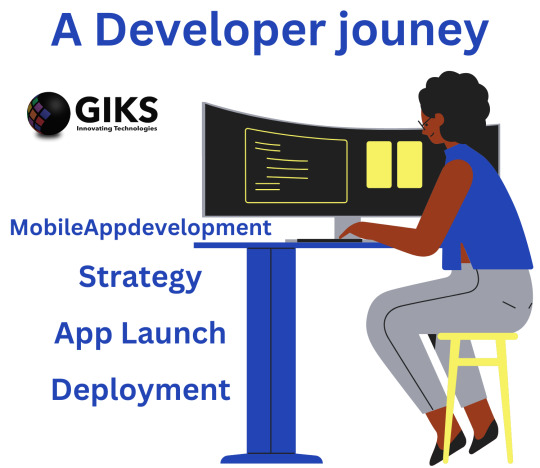
Embarking on Your Developer's Journey: A Step-By-Step Guide
The world of software development is a realm of endless creativity, innovation, and problem-solving. Whether you're just starting out or looking to transition into a tech career, embarking on your developer's journey is an exciting endeavor. From learning the fundamentals to mastering advanced concepts, this step-by-step guide will help you navigate the path to becoming a skilled developer.
Step 1: Define Your Path
Begin by clarifying your goals. Are you interested in frontend or backend development? Mobile apps or web applications? Defining your focus will guide your learning journey.
Step 2: Choose a Programming Language
Select a programming language aligned with your chosen path. For web development, consider languages like HTML, CSS, and JavaScript. For backend development, explore options like Python, Ruby, or Java.
Step 3: Learn the Basics
Start with the basics. Online platforms, coding bootcamps, and tutorials offer beginner-friendly resources to help you grasp programming concepts, syntax, and logic.
Step 4: Build Small Projects
Apply what you've learned by building small projects. These could be simple websites, calculators, or basic apps. Practice is key to solidify your understanding.
Step 5: Explore Frameworks
Frameworks simplify development. For web development, explore frontend frameworks like React or backend frameworks like Django and Ruby on Rails.
Step 6: Version Control with Git
Git is essential for collaboration and version control. Learn the basics of Git and platforms like GitHub to manage your projects effectively.
Step 7: Dive Deeper
As you gain confidence, delve into more advanced topics. Learn about databases, APIs, authentication, and other crucial concepts relevant to your chosen path.
Step 8: Solve Real-world Problems
Challenge yourself with real-world problems. Platforms like LeetCode and HackerRank offer coding challenges that enhance your problem-solving skills.
Step 9: Collaborate and Network
Join coding communities, forums, and meetups. Networking helps you learn from others, get feedback, and stay updated on industry trends.
Step 10: Build a Portfolio
Create a portfolio showcasing your projects. A strong portfolio demonstrates your skills and makes you stand out to potential employers.
Step 11: Seek Internships or Freelance Work
Apply your skills in real-world scenarios through internships or freelance work. Practical experience is invaluable for your growth as a developer.
Step 12: Keep Learning
Technology evolves rapidly. Stay curious and continue learning about new languages, tools, and trends to remain relevant in the field.
Step 13: Specialize
As you gain experience, consider specializing in a niche area like mobile app development, machine learning, or cybersecurity.
Step 14: Contribute to Open Source
Contributing to open-source projects enhances your skills, connects you with the community, and boosts your resume.
Step 15: Stay Adaptable
Adaptability is key in tech. Embrace change, continuously update your skills, and be open to learning new technologies.
In Conclusion
Embarking on your developer's journey requires dedication, perseverance, and a thirst for learning. Remember, every coder started as a beginner. By following this step-by-step guide, you'll lay a strong foundation for your growth as a developer. Stay curious, build, collaborate, and continuously improve – your journey has just begun.
For more information go to my blog website.
2 notes
·
View notes
Text
9 Easy Steps to Developing an App
2023 Guide
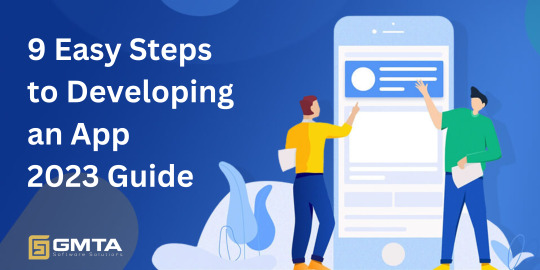
You undoubtedly want to know which technical skills, platforms, and app development software are the most critical to acquire if your firm wants to learn how to develop an app. In addition to having the essential technical know-how and making intelligent technological judgments, producing top-notch mobile apps also needs several other crucial responsibilities and considerations. The development of mobile apps calls for more than just technical expertise. You need a strategy and app development approach to make an app that provides the users a valuable experience.
This article will help you, if you are searching for developing an app. Becoming an app development expert can take years since it takes specialized training and practical experience. We won’t teach you the technical side of application development. Still, we will walk you through how your firm can take an original app idea and convert it into a mobile application that satisfies user needs and helps you realize your objectives. Look at some crucial procedures and aspects your firm must consider when designing an app.
How To Create An App Idea in Seven Easy Steps?
The process for developing an app is challenging. This new platform should entice users to download the application and convert within it, complement your website and mobile site, and represent a consistent corporate identity. It could be not very safe to know where to start.
Think about An Idea

Choosing your app’s general concept is the first stage in the development process. Consider your goals and how the mobile app will aid you in reaching them. This will establish the project’s vision and drive the design and functions required to accomplish your business objectives.
Assess Your Monetization

Though it seems like a step subsequent for developing an app, you should start contemplating your mobile app’s revenue model very early on, as this will have an impact on the design of the user experience. Among the most prevalent techniques of generating money are:
In-app acquisitions and updates
A comprehensive e-commerce app
Cost-per-download ads from third parties within the app
Select the Type of Features
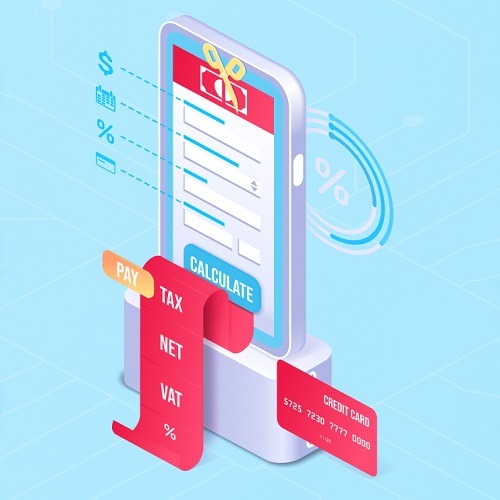
Especially in the initial edition for developing an app, a big mistake made by many organizations is attempting to jam too many functions into their mobile application. Reducing the desired features to necessary traits would be a better action.
App V1 should only contain the necessary functionality. Unbelievably, customer feedback will educate you about the additional capabilities clients demand.
Make Wireframes & User Journeys

A user experience designer will work with other specialists, such as a digital strategist or information architect, to construct a wireframe and sketch out the customer journey that users will take to perform the desired action once you have narrowed down the purpose and features of your app. Consider the app development cost also.
Create The Interface Design
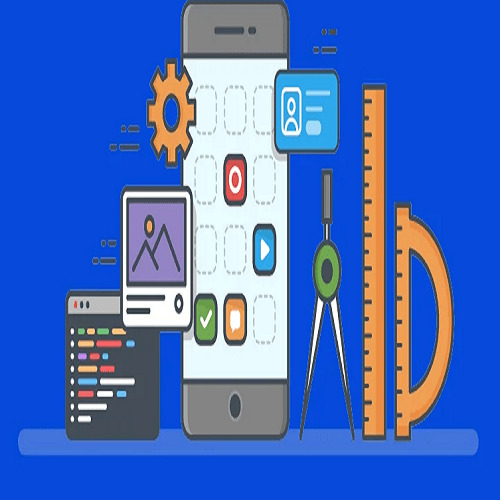
After the wireframe and customer journey are approved, an app designer will create the interface, including graphics, colors, designs, and more, to produce an engaging and well-branded experience. To put it another way, the designer will build a mockup, which is a mid-to high-fidelity visualization of the product, so that they can assess how the design feels and appears.
Mockups can also be used to examine the design’s visual coherence and accessibility, allowing designers to enhance their work’s aesthetic and functional components.
Create an App in a Test Setting

The hard work starts when the mobile app is designed, so app development will start platform coding. To ensure testing throughout the development process, they should conduct this in a test environment. App development businesses also design the backend, which enables team members to update content in addition to the frontend or customer-facing element of an app. When designing an app, it’s recommended to utilize a password management solution to keep your working data safe. It will enable your team members to view data from a distance.
Testing
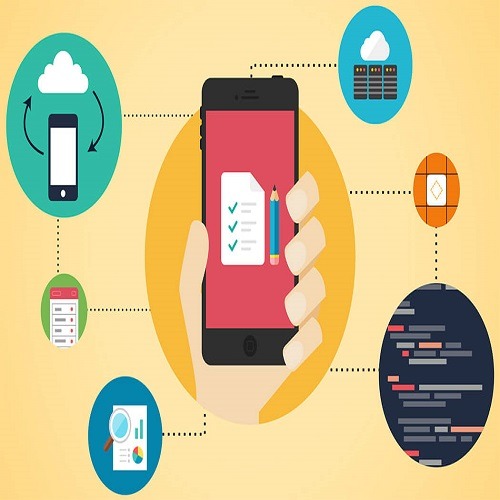
Every app should be tested several times. A trained quality assurance specialist should perform full QA testing to ensure every feature performs as intended. Developers can address any flaws detected in the test environment before the app’s release, guaranteeing that customers won’t know they’re there.
Submit App to App Retailers
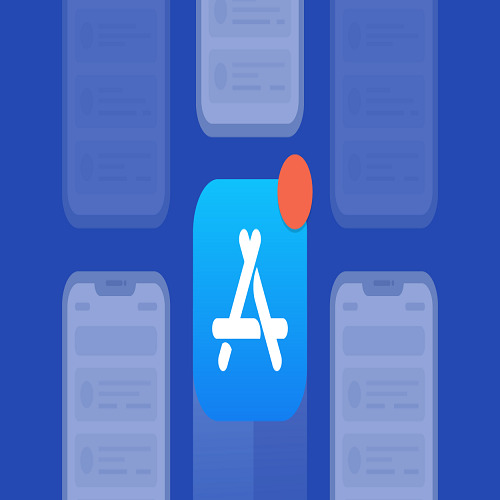
The mobile app development company will release your app version to the relevant app stores so that users can immediately usw it. Did you know businesses may submit images, videos, and other content to app stores to help target the correct audiences? Yes, that is true!
Send for review

Fortunately, a reliable mobile app development company that produce and design applications can assist companies in effectively promoting their products on app stores and other internet and social media platforms. This is significant, given that 61% of users refuse to install new apps. Additionally, it will improve downloads, raising your income and visibility in the app stores.
Considerations when thinking an app idea:
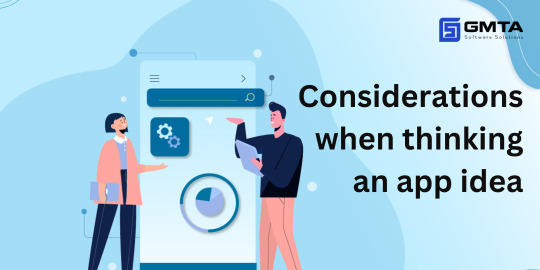
Here are some essential things to keep if you want for developing an app:
Choosing the appropriate platform

Selecting a suitable platform for developing an app is the first of several variables to consider before designing an app. Making this choice could be a challenging and complex undertaking. Therefore, take the range of expansibility and accessibility into mind when making this option.
Make an informed judgment regarding your choice of iOS or Android. The breadth and scalability of the application will gain from this approach, which will also inspire the app developers. It will also determine how versatile and beneficial your application is. After that, you may create the necessary code to construct your mobile application.
Identifying and interpreting the demands of the intended audience
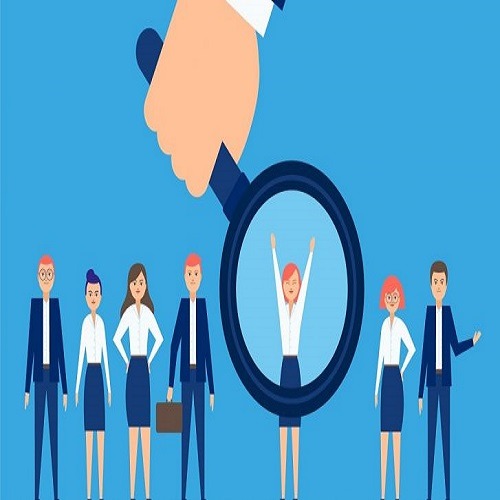
Before going to establish and create app, you should also carefully assess and comprehend who your target user is and what they need. This is an important evaluation area since the success of your application hinges on this underlying knowledge. Your application needs to offer the audience the appropriate resolution to receive the anticipated response.
To guarantee the effectiveness and legitimacy for developing an app, app developers can build and organize surveys and gather input and opinions from users in preparation. Ensuring that your application’s aims meet the users’ needs will also ensure that developers are headed correctly.
Selecting a reliable application development firm

Only the planning of an application is the job for developing an app. However, finding the finest mobile app development company is important to the execution. Choosing a trusted partner is a critical factor before moving forward with your app development. The perfect app development business or collaborator will guarantee that the finished product is interesting, user-friendly, and effectively addresses the specified market.
Carrying out detailed market research
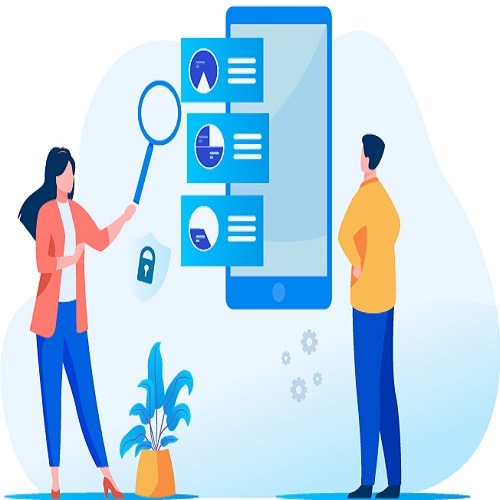
Completing thorough market research is an important element for developing an app. You may gather all the crucial facts and information regarding the industry’s state and your competitors’ standing by doing in-depth research. It will assist you in understanding various planning techniques and tactics. Remember to integrate consumer feedback into your analysis, determine the genuine needs of the users, and take the right action to address those needs.
Thinking about an idea for developing an app can be a critical process. More than writing code alone is required to generate a successful mobile application; app development requires more.
Important components of designing an app include market research, audience analysis, ideal development methodologies, and continuing maintenance. Consult the Best Mobile App Development Companies for this.
1 note
·
View note
Text
How to Hire iPhone App Developers That Deliver Quality

Introduction
In today's hyper-digital world, a compelling mobile look is no longer a luxury, but a requirement for companies aimed at flourishing. With more than a billion iPhone users globally, investing in an iOS with high quality can increase your access, customers can increase the connection and eventually increase growth. However, the success of your app is entirely on the expertise of the developers for hiring you. This broad guide will run through the stages and ideas required to Hire iPhone app developers who can make your vision a strong, high performance reality.
Key Factors to Consider Before You Hire iPhone App Developers
It is important for the ideal iPhone app development partner to understand the basic elements that contribute to a successful iPhone app project before they start the discovery.
Understanding the Development Process
A clear understanding of the app development style is your first step. This gives you the right to determine realistic expectations, communicate effectively and identify the right talent.
Breaking Down iPhone App Development Stages Typically, iPhone app development follows a structured path:
Discovery & Planning: Define the purpose of the app, the target groups, the features and the general scope. This phase includes market research, competitive analysis and creating a detailed project map.
UI/UX Design: Crafts A simple, blindly attractive and user -friendly interface. This involves following Apple's guidelines for human interface, wireframe, prototyping and designing the general shape and experience of the app.
Development: Write actual codes using programming languages such as Swift or Object-C, integrate APIs and build backend infrastructure.
Testing & Quality Assurance (QA): Strict testing of the app for errors, performance problems, security weaknesses and purposes in different iPhone models and iOS versions.
Deployment & Launch: Create an app to insert into the Apple App Store, including all app stores and marketing preparation guidelines.
Post-Launch Support & Maintenance: Introduces new features based on ongoing updates, error correction, performance monitoring and user response and technological progress.
The importance of understanding the process when you hire an iPhone app developer. When you know these stages, you can ask informed questions during the interview, evaluate the proposed time of a developer and identify potential red flags. This ensures that you not only hand over any task, but actively participate in the production of your digital product.
Why You Should Hire Dedicated iPhone Developers
While freelance platforms offer flexibility, for critical commitment and special skills that require projects, it is more advantageous to hire dedicated iPhone developers.
Dedicated developers provide unique focus and expertise. They are drowning in your project and will be the expansion of your team. This unique attention is often translated:
Deeper understanding: They gain a comprehensive understanding of your business goals and complexes in the project.
Consistent quality: Their continuous participation ensures continuous code quality and compliance with best practice.
Faster problem-solving: A code base knowledge provides the opportunity for quick identity and solution of problems.
Improved communication: Direct and consistent communication promotes a more collaborative environment.
This dedicated approach often provides better quality results, especially for complex or long -term projects.
Experience in Building Scalable Apps
In today's rapidly developed digital landscape, your app must be more than just the feature; This must be future evidence.
Why is the experience in making scalable apps while hiring developers. A scalable app is one that can handle users, features and increase the number of data without compromising on performance. When you Hire iPhone developers, you can ask about their experience:
Modular architecture: Designing apps in a way that allows existing people for easy addition of new features without disturbing.
Cloud infrastructure: Using scalable backend services such as AWS, Google Cloud or Azure.
Efficient database management: Strategy to effectively handle large versions of data.
Performance optimization: The technique to ensure that the app also remains sharp and responsible under heavy loads.
A developer with a proven tracking list in the creation of scalable solutions considers that the first success of your app should only be the beginning.
Where to Find the Best iPhone App Developers
The quest to hire iPhone app developers can lead you down various paths. Here are some of the most effective avenues:
Hire iPhone App Developer India – The Cost-Effective Solution
India has emerged as a global center for IT outputs, especially in the development of mobile apps.
Outsourcing for India provides quality development at competitive prices. The main advantage of choosing to Hire iPhone app developer India lies in a compelling mix of talented talent and competitive prices. India consists of a large pool of experienced iOS developers in the latest technologies. Combined with a favorable exchange rate and low operating costs compared to Western countries, it means significant cost savings without compromising on quality. Many Indian development companies also offer flexible engagement models, which makes you choose your budget and project scope to be the best.
Leveraging Online Platforms to Hire iPhone App Developers
The digital age provides several platforms to contact talented individuals and agencies.
Websites, agencies and platforms such as LinkedIn, Upwork and Clutch where you can hire iPhone app developers.
Freelance Platforms (Upwork, Fiverr, Toptal): These platforms offer a large selection of freelance iOS developers with different skills and experience levels. You can undergo a profile, portfolio and client prevention to find a suitable match.
B2B Directories (Clutch, GoodFirms):These platforms show reputable app development companies, often with detailed client reviews, case studies and rankings, making it easier to compare and hire iOS developer teams.
Professional Networking Sites (LinkedIn): LinkedIn lets you after the opening of the job to search for individual developers, get in touch with your professional network and even attract direct applicants.
Specialized Development Agencies: These agencies often have a pre -instituted team of experts and can provide more structured approaches, including project management and quality assurance.
Each platform has its own professionals and resistance, so consider the budget, pressed and desired level participation while choosing.
The Role of iOS Developers in Building Innovative Solutions
Beyond just coding, iOS developers are instrumental in bringing innovative concepts to life.
Explaining how iOS developers is important for creating innovative apps that fit the latest iPhone technologies. The best iOS developers are not just coders; They are problems and innovators. They are still equivalent to the latest Apple technologies, the framework (eg Swiftui, architect, Core ML) and design trends. They can recommend that in order to use attractive and sophisticated user experiences to really benefit from features such as Agramed Reality (AR), machine learning and advanced haptic feedback. When you Hire iOS developers who understand the nuances of the Apple ecosystem, you can get a partner who can push your app limits that is possible with your app.
Key Qualities to Look for When You Hire an iPhone App Developer
Identifying the right developer is outside checking technical skills. It's about finding a good professional.
Strong Knowledge of Swift and Objective-C
The basis for any successful iOS app lies in the skill of the most important programming languages.
Why is skill in Swift and object-C to create a strong iPhone app. Swift is the modern, powerful and spontaneous programming language of Apple, which is widely used to create iOS apps. The safety features and short syntax make it a favorite option for new development. Object-C, while old, is still widespread in heritage and some frames. A developer with strong knowledge of both languages, especially Swift, shows a broad understanding of the development ecosystem. They should be able to write clean, skilled and maintenance code.
A Proven Track Record of Success in iPhone App Development
Last performance is often the best indicator of future success.
To ensure how they can distribute high quality projects, how to confirm their previous work.
Portfolio Review: Request a wide portfolio showing your previous iPhone app projects. See variety in app type, complexity and design.
Live Apps on the App Store: Download and test the apps they have developed that are live in the App Store. Consider their functionality, Ui/UX, Display and Bug-Firn.
Case Studies: Review detailed case studies facing challenges, Solutions Applied Solutions and Results achieved for former customers.
Client Testimonials & References: Ask for client tests or, even better, direct contact with former customers to gain insight into their work style, communication and ability to fulfill the promises.
A perfect track record provides confidence in their ability to meet the requirements for your project.
Good Communication Skills and Project Management Capabilities
Technical skills alone are not enough; Effective cooperation is crucial.
Why is clear communication and timely delivery important when hiring iPhone developers?
Clear Communication: The development process involves continuously back and forth. Developers should obviously be able to clarify technical concepts, provide regular updates and understand your answer. This reduces the misunderstanding and keeps the project on track.
Project Management Capabilities: Whether they are individual freelancers or part of a large team, developers should demonstrate an understanding of the project management method (eg Agile, fraud). This involves setting up realistic deadlines, managing tasks, identifying potential obstacles and communicating solutions.Timely distribution is the direct result of effective project management.
How to Choose Between In-House and Outsourcing When You Hire iPhone App Developer
The decision between building an in-house team and outsourcing is a critical strategic choice.
Benefits of Hiring iPhone App Developers In-House
For some companies, their own team provides different benefits.
Control over the project, close collaboration, and real-time feedback.
Maximum Control: A separate team provides direct inspection and complete control of the development process, which allows immediate changes and adaptation.
Close Collaboration: Physical closeness facilitates real -time communication, thoughtful sessions and dynamics a strong team.
Cultural Fit:It is easy to secure developers to match the company's culture and values, which can lead to greater commitment and loyalty.
IP Protection: For very sensitive projects, keeping the development at home can lead to more sense of security for intellectual property.
Benefits of Outsourcing iPhone App Development to India
On the other hand, outsourcing presents a compelling option, especially when you hire iPhone app developer India.
When you hire iPhone app developer India, the cost-effective, access to skilled talents and the benefits of global cooperation.
Cost-Effectiveness: As mentioned, India gives a much lower development cost than in Western countries, so you can allocate budgets in other important areas.
Access to Skilled Talent: India has a large pool with various talented and experienced iOS developers, who specialize in different niches and technologies.
Scalability & Flexibility: Outsourcing allows you to keep the growth team up or down based on the project's needs without overhead of the shooting.
Faster Time-to-Market:With dedicated teams and potentially large talent pools, outsourced projects can often be completed quickly.
Time Zone Advantage: Time differences can sometimes be utilized for development cycle 24/7, while your internal team rests.
How to Evaluate iPhone App Developers Before Hiring
A structured evaluation process is essential to make an informed hiring decision.
Portfolio and Client Testimonials
These are your initial screening tools.
Why is it necessary to check their portfolio and client reviews before hiring a dedicated iPhone developer. A strong portfolio shows their abilities and style. Look for relevant projects for your industry or desired app type. Customer tests provide important third -party verification of their credibility, communication and quality of work. Websites such as clutch and good films are excellent resources for confirmed reviews. This helps you consider whether they are actually a dedicated iPhone developer that provides frequent value.
Conducting Technical Interviews and Skill Assessments
Moving beyond the surface, deep-dive into their technical abilities.
The importance of conducting interviews to test technical skills before hiring the iPhone app developer.
Technical Interviews: Core iOS Development concepts, Swift/Object-C property, frame understanding (UiKit, Swifti), architectural patterns (MVC, MVCM, VIPER) and interviews that cover problems that cover problems.
Coding Challenges/Assignments:Provide a small coding challenge or ask them to go through a code example they have written. This allows you to take into account coding style, logic and expansion.
System Design Questions: For several senior roles, ask questions related to the design of scalable and strong appliances.
Discussion of Past Projects: Ask them to describe their role and challenges in previous projects.
This hand conclusion helps to confirm their practical skills and theoretical knowledge.
Compatibility with Your Startup’s Culture and Vision
In addition to technical skills, a good fit for long -term success.
Assessment of cultural fit and long -term compatibility with your business goals.
Understand Your Culture:Before interviewing, define the main values, communication style and acting morale at start -up.
Behavioral Questions: Ask behavioral questions during the interview to understand how they handle challenges, work in a team and respond to the response.
Team Interactions: Event, if possible, an informal conversation with your current team members to estimate mutual compatibility.
Shared Vision: Discuss your long -term business goals and vision for the app. Look for developers who show real enthusiasm and can contribute strategically.
A good cultural fit can significantly impact team morale, productivity, and overall project success.
Budgeting for Your iPhone App Development Project
Understanding financial investment is crucial for effective planning.
Setting a Realistic Budget for High-Quality Development
App development is an investment, and high-quality often comes with a price tag.
Understanding the charges related to hiring top-tier iPhone app developers. The fee of hiring iPhone app developers varies extensively primarily based on factors like:
App Complexity: Simple apps (e.G., calculators) are much less high-priced than complicated ones (e.G., social media platforms, e-commerce apps).
Number of Features: Each function provides the development time and price.
UI/UX Design Complexity: Custom, highly interactive designs cost extra than template-primarily based ones.
Integrations: Third-party API integrations (e.G., charge gateways, social media logins) upload to the complexity.
Location of Developers: Developers in North America and Western Europe generally command better hourly costs than those in Eastern Europe or Asia.
Experience Level: Senior developers rate extra than junior or mid-level developers.
Hiring Model: Freelancers, organizations, or dedicated teams have distinctive pricing structures (hourly, constant-charge, retainer).
It's wise to allocate a buffer to your price range for unforeseen challenges or function enhancements.
How Much Does It Cost to Hire an iPhone App Developer in India?
To provide particular price breakdowns while hiring iPhone app developers from India. While expenses range, the price to rent iPhone developers in India is generally much lower than in lots of western international locations.
Junior Developers (1-3 years experience): Can range from $15-$25 per hour.
Mid-Level Developers (3-5 years experience): Typically $25-$40 per hour.
Senior Developers (5+ years experience): Can range from $40-$70+ per hour.
Team Lead/Architects: $70+ per hour.
For a medium -sized, slight complicated app, a project can range from $ 25,000 to $ 70,000, whilst very complex corporate level apps can exceed $ one hundred,000. These figures are expected and may carry up based totally on particular requirements and decided on increase companions.
Ensuring Long-Term Success After You Hire iPhone App Developers
The launch is just the beginning of your app's journey.
Post-Launch Support and Maintenance
An app is a living product that requires continuous care.
Why ongoing guidance and updates are critical for long-time period app success.
Bug Fixes: No app is absolutely bug-free. Ongoing assistance ensures swift resolution of any troubles that get up.
Performance Optimization: As consumer numbers grow or new iOS versions are released, the app would possibly need optimization to preserve performance.
Security Updates: Apple often releases protection patches and updates. Your app needs to be updated to stay secure and compliant.
Feature Enhancements: Based on user feedback and market tendencies, new capabilities will be important to preserve your app competitive and engaging.
Compatibility: Ensuring the app stays compatible with new iPhone models and iOS versions.
Discuss post-launch support and maintenance plans with your chosen developers upfront.
Monitoring Performance and Gathering User Feedback
Continuous improvement is important for continuous growth.
How does the response loop help continuously improve the app after launch.
Analytics Tools: Use analysis tools (eg Firebase Analytics, mix panel) for using the app, crash prices, user engagement and performance measurements.
User Feedback Channels: Users provide easy ways to present feedback (eg feedback form in the app, the App Store reviews, social media).
Iterative Development: Use the insights obtained from performance monitoring and user response to prioritize and prioritize future updates and functional improvements. This repetition method ensures that your app develops in line with the user's needs and market requirements.
Conclusion
Hiring the right iPhone developers is the most important decision in your app Vika's Yatra. Recognizing the development process, recognizing the value of a dedicated iPhone developer, prioritizing scalability, searching for options such as outsourcing to HireiPhone app developer India, and carefully evaluating candidates based on technical skills, communication and cultural fit, you significantly improve your opportunities. Really remember the budget and plan for long -term support and maintenance.
Think of companies like AIS Technolabs when a partner is looking for a partner looking for technical skill with a proven merit list of distribution quality. The iOS ecosystem and their expertise in the customer-focused approach can help you navigate the complexities of app development and make your digital ambitions feel. By following these guidelines, you will be well equipped to hire iPhone developers who can actually provide quality and run your app to succeed in the competing market. Know more>>https://medium.com/@ridh57837/how-to-hire-iphone-app-developers-that-deliver-quality-d34e5344b028
#hire iphone app developers#hire dedicated iphone developer#hire iphone app developer india#hire ios developer
0 notes
Text
The Complete Guide to Ecommerce Development Services: Choosing the Right Platform for Your Business
As the ecommerce industry grows, businesses must invest in reliable, scalable, and efficient ecommerce development services to meet user expectations and operational demands. Whether you're a small business owner or managing a large enterprise, selecting the right development platform can significantly impact your growth. This article explores key options, including Wix website development, Shopify Development Services, and Adobe Commerce Development Services, to help you make an informed choice.
Why Ecommerce Development Services Matter
Every successful online business starts with a solid technological foundation. Professional ecommerce development services ensure that your store is fast, secure, and equipped with all necessary features such as payment gateways, inventory management, responsive design, and third-party integrations. The choice of platform often depends on the business size, future scalability, and customization requirements.
Getting Started with Wix Website Development
Wix website development is ideal for individuals and small businesses looking for an easy-to-use solution. With its intuitive drag-and-drop interface, Wix enables non-technical users to build functional ecommerce sites without writing code.
Features of Wix:
Drag-and-drop page builder
Pre-built templates for various industries
Basic store features like product display, cart, and payment
Integrated hosting and maintenance
Best Use Cases:
Solo entrepreneurs or artisans selling a limited range of products
Small retailers who prioritize quick setup and low maintenance
Businesses looking for a minimal web presence with basic ecommerce features
Wix website development is cost-effective and simple to manage but lacks deep customization and advanced scalability, making it less suitable for businesses with complex needs.
Why Choose Shopify Development Services
For businesses aiming for growth and scalability, Shopify Development Services offer a more robust and flexible solution. Shopify is a dedicated ecommerce platform designed to handle everything from product listings to order fulfillment and marketing integrations.
Features of Shopify:
Optimized for mobile and desktop experiences
App ecosystem with plugins for marketing, SEO, shipping, and more
Support for international selling and multi-currency
Built-in analytics and reporting
Best Use Cases:
Brands scaling from small to medium-sized operations
Dropshipping businesses and direct-to-consumer models
Businesses looking for ready-made ecommerce infrastructure with flexibility
Shopify Development Services are ideal for businesses that want a balance between ease of use and advanced ecommerce functionality without the need to manage hosting or backend servers.
Power and Flexibility with Adobe Commerce Development Services
Previously known as Magento Commerce, Adobe Commerce Development Services are built for enterprise-level operations. This platform offers unmatched flexibility, allowing full control over the design, functionality, and integration of your ecommerce system.
Features of Adobe Commerce:
Advanced product management and customer segmentation
B2B and B2C capabilities under one platform
Scalable architecture for handling large product catalogs and high traffic
Strong API support for third-party system integration
Best Use Cases:
Large enterprises managing multiple stores or markets
Businesses requiring tailored user experiences and backend operations
Organizations with in-house IT teams or long-term development partners
Adobe Commerce Development Services are suited for businesses that need high customization, deep integration capabilities, and enterprise-grade performance. However, they typically require more resources for setup and maintenance.
Role of Expert Development Partners
No matter which platform you choose, a professional development partner can help streamline the process. Whether it's setting up a theme, customizing your store, or ensuring smooth integrations, experienced providers of ecommerce development services bring technical expertise and platform knowledge to the table.
One such trusted name in the industry is Webiators, offering specialized development support across platforms including Wix website development, Shopify Development Services, and Adobe Commerce Development Services.
Final Thoughts
Selecting the right ecommerce platform is more than a technical decision—it’s a strategic one. Ecommerce development services should align with your business size, operational goals, and long-term vision.
Use Wix website development if you want a quick, no-code solution for a small store.
Choose Shopify Development Services for ease of use combined with scalable functionality.
Opt for Adobe Commerce Development Services when you need full control and custom enterprise-grade ecommerce capabilities.
Make your decision based on functionality, future growth plans, and available resources to ensure your online store is ready to compete and succeed in today’s digital landscape.
#Wix website development#Shopify Development Services#Adobe Commerce Development Services#ecommerce development services
0 notes
Text
Why Open Source Database Adoption is Accelerating in 2025
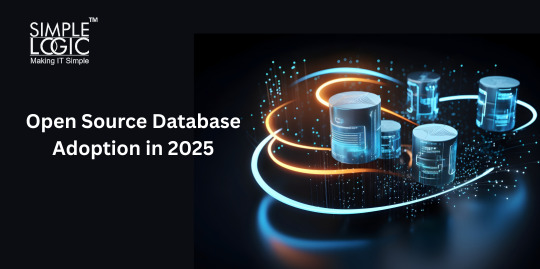
In 2025, open source databases have officially moved from niche solutions to mainstream enterprise choices. With the ever-growing need for scalable, cost-efficient, and flexible data management systems, organizations are increasingly turning toward open source database management solutions to drive innovation and reduce vendor lock-in. From MySQL to PostgreSQL and MongoDB, the popularity of these platforms has surged across industries.
But why are so many businesses making the switch now? Let’s explore the growing adoption of open source databases, their features, benefits, and how to implement them in your IT ecosystem.
Key Features of Open Source Databases
✔️ Source Code Access – Modify and optimize your database to suit your business logic. ✔️ Community-Driven Development – Get regular updates, security patches, and support from global communities. ✔️ Cross-Platform Compatibility – Open source databases are platform-independent and highly portable. ✔️ Support for Advanced Data Models – Handle structured, semi-structured, and unstructured data easily. ✔️ Integrations and Extensions – Access a variety of plug-ins and connectors to expand functionality.
Why Open Source Database Adoption is Booming in 2025
💡 1. Cost-Effectiveness
No hefty licensing fees. Businesses save significantly on software costs while still getting robust features.
⚡ 2. Flexibility and Customization
Developers can fine-tune the database, adjust configurations, or build new functionalities—something proprietary systems limit.
🔒 3. Strong Security and Transparency
With open source, vulnerabilities are exposed and fixed faster thanks to large developer communities.
🚀 4. Scalable for Modern Applications
Whether it's IoT, big data, or AI-driven apps, open source databases scale well horizontally and vertically.
🌐 5. No Vendor Lock-In
Businesses can avoid being stuck with a single provider and switch or scale as needed.
Steps to Successfully Adopt an Open Source Database
✅ Step 1: Evaluate Your Current Infrastructure
Understand your existing data structure, workloads, and performance needs.
✅ Step 2: Choose the Right Database (MySQL, PostgreSQL, MongoDB, etc.)
Pick a database based on your data type, scale, transaction needs, and technical stack.
✅ Step 3: Plan Migration Carefully
Work with experts to move from proprietary systems to open source databases without data loss or downtime.
✅ Step 4: Monitor & Optimize Post-Migration
Use tools for performance monitoring, indexing, and query optimization to get the best out of your new setup.
Real-World Use Cases of Open Source Databases
🏥 Healthcare: Managing patient data securely and affordably. 🛍️ E-commerce: Handling high transaction volumes with scalable databases. 💼 Enterprises: Leveraging PostgreSQL and MySQL for internal applications. 📱 Mobile Apps: Using MongoDB for flexible and fast mobile backend support.
FAQs on Open Source Database Adoption
❓ Are open source databases secure for enterprise use?
Yes, most modern open source databases are highly secure with active communities and regular updates.
❓ What are some top open source databases in 2025?
PostgreSQL, MySQL, MariaDB, MongoDB, and Apache Cassandra are leading the pack.
❓ Will I need in-house expertise to manage it?
Not necessarily. You can always work with managed service providers like Simple Logic to handle everything from setup to optimization.
❓ Can open source databases support enterprise-scale apps?
Absolutely! They support clustering, replication, high availability, and advanced performance tuning.
❓ How can I migrate from my current database to an open source one?
With expert planning, data assessment, and the right tools. Reach out to Simple Logic for a guided and smooth transition.
Conclusion: Future-Proof Your Business with Open Source Databases
Open source databases are no longer a tech experiment—they're the backbone of modern digital infrastructure. From scalability to security, businesses in 2025 are realizing the value of making the shift. If you're still relying on outdated, expensive proprietary databases, it’s time to explore smarter, more agile options.
✅ Ready to Embrace Open Source? Let’s Talk!
Whether you’re planning to adopt PostgreSQL, MySQL, or any other open source database, Simple Logic offers expert guidance, migration support, and performance tuning to ensure a seamless experience.
📞 Call us today at +91 86556 1654 🌐 Visit: www.simplelogic-it.com
👉 Don’t just follow the trend lead with innovation! 🚀
https://simplelogic-it.com/open-source-database-adoption-in-2025/
#OpenSourceDatabase#DatabaseAdoption2025#PostgreSQL#MySQL#DatabaseInnovation#TechTrends2025#EnterpriseIT#DatabaseManagement#MakeITSimple#SimpleLogicIT#SimpleLogic#MakingITSimple#ITServices#ITConsulting
0 notes
Text
Custom App Solutions That Drive Business Growth
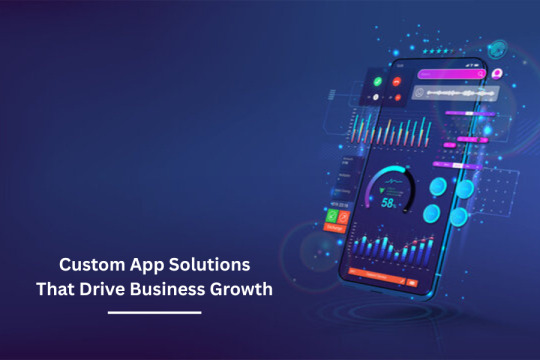
Businesses today want smart ways to grow. They look for tools that help them work faster and serve customers better. One such tool is a custom mobile app. A well-made app supports many parts of a business and helps it move ahead. Whether it is about tracking orders, giving updates, or helping customers shop smoothly, a mobile app helps.
Why Custom Apps Matter
Each business has its own needs. A general app does not fit all. A custom app meets the exact needs of a business. It adds the features that matter most. It removes things that are not useful. The result is a clean and easy tool that works for the team and the users.
Custom apps help in these ways:
Improve customer experience
Boost team productivity
Reduce manual tasks
Support fast decision making
An app gives updates in real time and keeps data safe. It also helps in growing brand value as people start trusting your service more. Many users also like the comfort of using a phone app. It saves time and offers ease.
Role of the Right Development Partner
The success of a custom app depends on the team behind it. A skilled team listens and builds what the client needs. They ask the right questions and suggest good solutions. A Mobile App Development Company in Gurgaon brings this kind of skill and care. It understands what local and global businesses want. The developers also work hard on user design and smooth flow.
A good development company not only builds apps. It also tests them, keeps them safe, and supports them after launch. When you choose the right team, your app runs well and supports your growth plans.
Building the Right Features
An app should not just look good. It should do its job well. Some features help all kinds of businesses. These include:
Secure login and user control
Smart push alerts
Easy payment options
Quick support tools
Reports and dashboards
Some apps also connect to other systems. These could be CRM tools, inventory software, or cloud services. When this happens, work becomes faster and smoother.
A strong Mobile App Development Company in Gurgaon will guide you on which features fit your business best. It will not just add tools, but build a full app plan that works as a part of your business.
Looking at the Future
A custom app also sets the base for future growth. It makes it easier to try new ideas or explore fresh markets. A trusted tech partner stays with you as your needs change. This helps you keep moving ahead.
App growth is not only about mobile screens. It is also about strong backend work. API services play a big role in this area. An Api Development Company in Gurgaon gives this strength to your app. It allows your app to talk to other systems and share data safely and fast.
Strong apps do more than work well. They shape the future of your business
1 note
·
View note
Text
Can a Mobile App Development Company in Bangalore Solve Your Industry’s Hardest Tech Challenge?
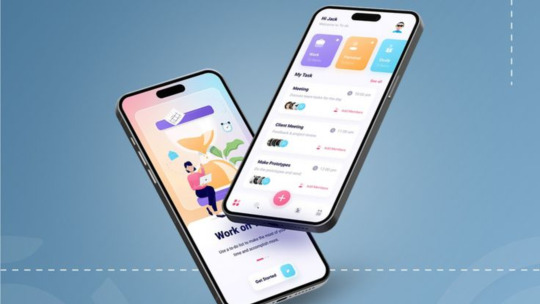
Every industry—whether it’s fintech, healthcare, logistics, education, or retail—faces unique and often difficult digital challenges. These aren't just technical hurdles, but deep-rooted, process-driven complexities that demand robust, secure, and scalable mobile application solutions. This raises a critical question: Can a mobile app development company in Bangalore truly solve your industry’s hardest tech challenges? The answer lies in experience, capability, and domain understanding. One such company that stands out in this space is WebSenor—a leading name in mobile app development in Bangalore. With over a decade of experience, WebSenor has helped businesses across industries overcome complex technology problems with tailored mobile solutions. This article explores why companies like WebSenor are trusted partners in solving mission-critical app challenges—and why Bangalore is the go-to hub for such expertise.
Why Bangalore Is a Hub for Complex Mobile App Solutions
Innovation Meets Affordability
Bangalore is India’s leading tech city, often called the Silicon Valley of the East. It is home to some of the top mobile app development companies in Bangalore, serving both local and global clients. The advantage lies in the ability to deliver high-quality software development at significantly lower costs than Western markets. This means businesses can access premium mobile development talent, innovation, and infrastructure—while keeping their app development cost in Bangalore within a manageable budget.
Deep Technical Talent and Domain Knowledge
Bangalore has a deep pool of mobile app developers, including experts in Android, iOS, and cross-platform technologies like Flutter and React Native. These professionals are backed by a culture of continuous learning and exposure to global standards. Many developers also bring specific domain knowledge—understanding the nuances of industries like healthcare, fintech, logistics, or education. That level of insight is crucial for solving complex challenges that go beyond just writing code.
What Makes a Tech Challenge ‘Hard’ in Your Industry?
Real-World Industry Challenges
Let’s look at what makes some challenges difficult to solve using standard app solutions:
Fintech requires bulletproof security, regulatory compliance, and seamless integration with banking APIs.
Healthcare needs strict data protection, HIPAA compliance, and real-time monitoring capabilities.
Logistics demands accurate GPS tracking, predictive analytics, and route optimization features.
Retail needs omnichannel experiences, backend inventory systems, and scalability during sales peaks.
Education depends on intuitive interfaces, remote learning tools, and offline functionality in low-bandwidth regions.
Each of these sectors has unique expectations that generic apps can’t meet.
The Gap Between Generic Developers and True Industry Experts
Many development firms can build an app, but few can solve industry-specific issues. Why? Because complex tech challenges require more than development—they need understanding of workflows, regulations, legacy systems, and user behavior.
This is where companies like WebSenor, known for custom mobile app development in Bangalore, differentiate themselves. They build not just apps, but complete digital ecosystems tailored to your business model.
WebSenor’s Approach to Solving Tough Tech Challenges
In-Depth Discovery & Consultation
At WebSenor, every project begins with detailed discovery sessions. This includes:
Industry-specific research
Stakeholder interviews
Competitive benchmarking
Use case analysis
This ensures that the app isn’t just functional, but strategically aligned with the business’s goals and pain points.
Strategy-Driven UI/UX Design
Good design is not just about looks—it’s about solving real problems for real users. WebSenor’s UI/UX design for mobile apps is guided by user personas, user flows, and behavior patterns.
Whether it’s a logistics dashboard or a patient monitoring interface, the UI/UX is tailored to the end-user’s environment and needs.
Scalable, Secure Architecture
WebSenor uses modern architecture patterns such as microservices and serverless computing. Key security elements like:
Data encryption
Multi-factor authentication
Secure API integrations
…are part of every app. Their solutions are built for enterprise mobility, with flexibility to scale across platforms and geographies.
Agile Development with Milestone-Based Validation
To manage complexity, WebSenor follows agile development. Clients are updated with each sprint cycle, giving them the ability to test, iterate, and give feedback. This not only ensures quality but reduces risks significantly.
Case Studies – Industry Challenges Solved by WebSenor
Logistics Platform with Real-Time GPS Tracking & Load Optimization
Challenge: A logistics company needed a solution to track shipments in real time and optimize route efficiency.
Solution: WebSenor built a GPS-enabled mobile platform with predictive load management and delivery analytics.
Outcome:
30% reduction in delivery delays
20% cost savings in fleet operations
Fintech App for Compliance and Multi-Level Authentication
Challenge: A fintech client had to comply with regional regulations while ensuring frictionless user onboarding.
Solution: WebSenor developed a secure mobile wallet with multi-level authentication, encrypted transactions, and regulatory reporting features.
Outcome:
Full compliance with RBI and GDPR
50,000+ downloads in the first quarter
High trust ratings among users
EdTech Mobile App with Interactive Learning and Offline Support
Challenge: An education startup needed a way to engage students in rural areas with limited internet access.
Solution: A hybrid mobile app was developed with pre-loaded learning content, assessments, and offline mode support.
Outcome:
60% increase in student retention
Expanded reach to Tier 2 and Tier 3 cities
High engagement on in-app quizzes and leaderboards
Why Choose a Mobile App Development Company in Bangalore Like WebSenor
Proven Experience Across Industries
With 10+ years in software development in Bangalore, WebSenor has delivered over 500 custom mobile apps. Their team includes seasoned professionals from diverse backgrounds who understand the intricacies of various sectors.
They’ve built apps for:
Hospitals
Educational institutions
E-commerce companies
Fintech platforms
Supply chain and logistics providers
End-to-End Ownership & Post-Launch Support
Unlike many vendors, WebSenor takes full ownership—from product strategy and MVP development to app store optimization and post-launch support.
Their team doesn’t stop at delivery. Ongoing performance analysis, user feedback implementation, and system upgrades are part of their long-term support.
Transparent Process & Long-Term Vision
WebSenor believes in complete transparency. Clients receive:
Signed NDAs
Milestone-based payments
Full documentation
Source code ownership
This trust-first approach is what makes WebSenor one of the best app developers in Bangalore today.
How to Know If Your Business Is Ready for a Tech Transformation
Signs You Need a Custom Mobile App
Your workflows are inefficient or fragmented
Existing systems don’t communicate well
Customers demand a better mobile experience
Competitors are gaining traction via apps
Your team lacks tools for productivity or insights
If these sound familiar, it may be time to consider a custom mobile solution.
Checklist for Choosing the Right Tech Partner
When selecting a mobile app development company in Bangalore, look for:
Proven domain expertise
A strong communication process
Scalable technology choices
Transparent pricing
Long-term post-launch support
Final Thoughts: Complexity Needs Competence
Not all mobile apps are created equal. When the tech challenge is difficult—when the business rules are intricate, data is sensitive, or users are spread across regions—you need more than an app developer. You need a technology partner who understands your industry.
WebSenor, with its experience in mobile app development services in Bangalore, delivers just that. Whether you're a growing startup or an established enterprise, WebSenor can help you turn your most difficult tech challenges into long-term competitive advantages.
FAQs
What kind of mobile apps does WebSenor specialize in?
WebSenor develops Android, iOS, and cross-platform apps across sectors including healthcare, logistics, fintech, education, retail, and more.
How does WebSenor ensure security in enterprise apps?
They implement data encryption, secure APIs, multi-factor authentication, and follow compliance frameworks like HIPAA and GDPR.
Can WebSenor integrate with legacy systems?
Yes. Their team specializes in integrating new mobile apps with older ERP, CRM, and backend systems.
What’s the typical timeline for a complex mobile app?
Timelines vary by complexity. MVPs can take 8–12 weeks, while fully featured enterprise apps may take 3–6 months.
How much does a custom mobile app cost in Bangalore?
The cost depends on features, tech stack, and scope. Basic apps may start around $5,000–$10,000, while complex apps can range up to $50,000+. WebSenor offers custom quotes based on your specific needs.
#MobileAppDevelopmentCompanyInBangalore#MobileAppDevelopmentServicesInBangalore#TopMobileAppDevelopmentCompaniesInBangalore#CustomMobileAppDevelopmentBangalore#AndroidAppDevelopmentCompanyInBangalore#iOSAppDevelopmentCompanyInBangalore#AppDevelopmentCompanyBangalore#BestAppDevelopersInBangalore#MobileApplicationSolutions#SoftwareDevelopmentBangalore#UIUXDesignForMobileApps#OutsourcingAppDevelopment#AppDevelopmentCostInBangalore#StartupMobileAppPartner#EnterpriseAppDevelopmentBangalore#BangaloreTechSolutions#HireAppDevelopersInBangalore#DigitalTransformationBangalore#BusinessAppDevelopmentIndia#MobileAppExpertsIndia
0 notes
Text
Build Mobile App Backend with WordPress REST API – Free eBook
Want to build a mobile app without creating a separate backend? This eBook, Mobile App Backend with WordPress REST API: A Complete Guide, shows you how to use WordPress as a powerful backend for mobile applications. Traditionally used for websites and blogs, WordPress can also manage your app's data, user accounts, and content through its REST API.
You’ll learn how to set up WordPress locally, understand REST API basics, handle secure authentication using OAuth and JWT, and create custom endpoints. The guide also explains how to perform CRUD operations (Create, Read, Update, Delete) and connect your app to WordPress using frameworks like React Native.
Security and debugging tips are included to help ensure your backend runs smoothly. With step-by-step instructions and real examples, this eBook is perfect for developers looking to save time and costs by reusing a familiar platform. Download now.
#WordPressRESTAPI#MobileAppDevelopment#WordPressBackend#AppDevelopmentGuide#ReactNative#BackendSolutions#MobileDev#APIIntegration#SecureApps
0 notes